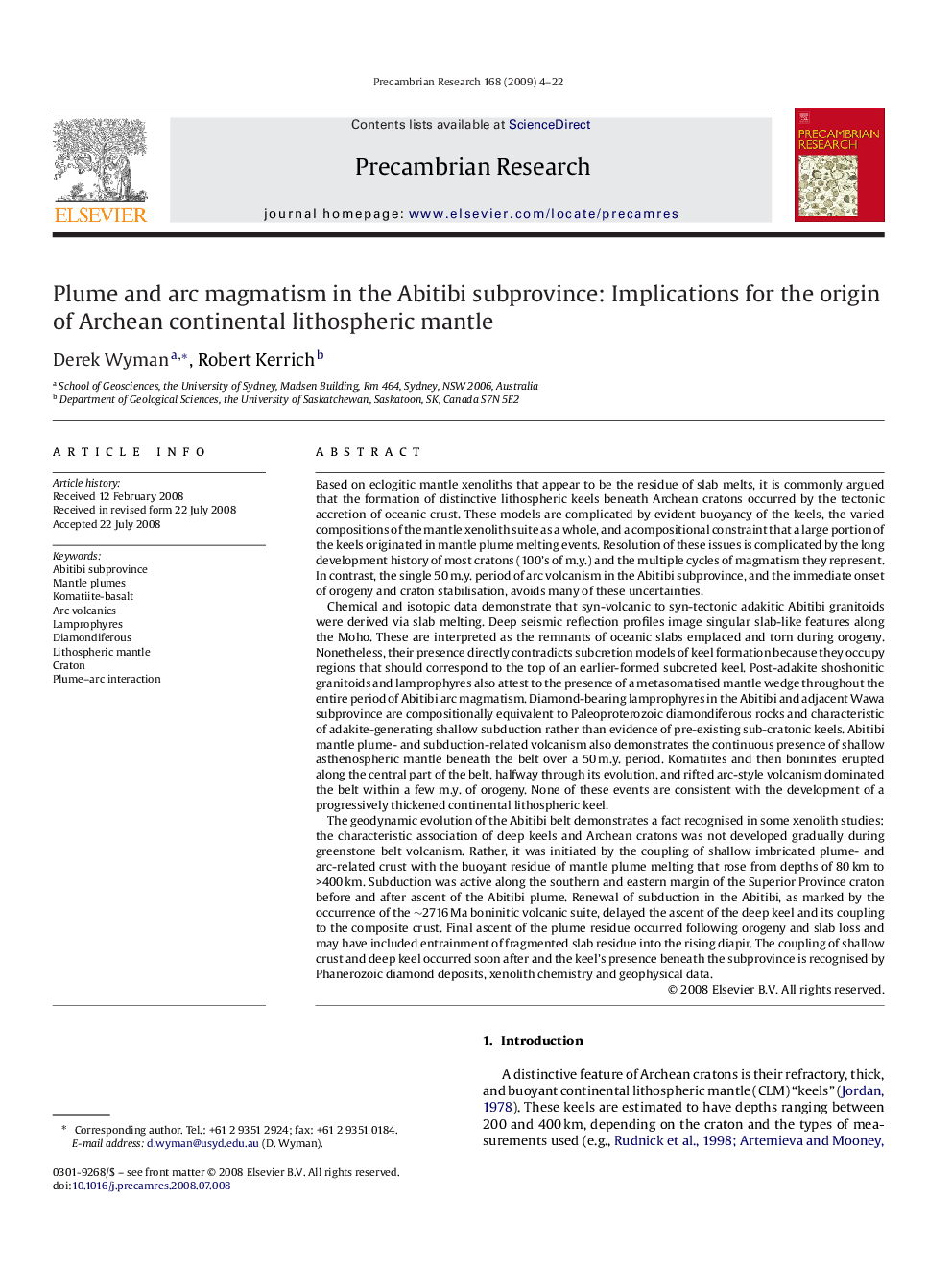| کد مقاله | کد نشریه | سال انتشار | مقاله انگلیسی | نسخه تمام متن |
|---|---|---|---|---|
| 4724115 | 1639695 | 2009 | 19 صفحه PDF | دانلود رایگان |

Based on eclogitic mantle xenoliths that appear to be the residue of slab melts, it is commonly argued that the formation of distinctive lithospheric keels beneath Archean cratons occurred by the tectonic accretion of oceanic crust. These models are complicated by evident buoyancy of the keels, the varied compositions of the mantle xenolith suite as a whole, and a compositional constraint that a large portion of the keels originated in mantle plume melting events. Resolution of these issues is complicated by the long development history of most cratons (100’s of m.y.) and the multiple cycles of magmatism they represent. In contrast, the single 50 m.y. period of arc volcanism in the Abitibi subprovince, and the immediate onset of orogeny and craton stabilisation, avoids many of these uncertainties.Chemical and isotopic data demonstrate that syn-volcanic to syn-tectonic adakitic Abitibi granitoids were derived via slab melting. Deep seismic reflection profiles image singular slab-like features along the Moho. These are interpreted as the remnants of oceanic slabs emplaced and torn during orogeny. Nonetheless, their presence directly contradicts subcretion models of keel formation because they occupy regions that should correspond to the top of an earlier-formed subcreted keel. Post-adakite shoshonitic granitoids and lamprophyres also attest to the presence of a metasomatised mantle wedge throughout the entire period of Abitibi arc magmatism. Diamond-bearing lamprophyres in the Abitibi and adjacent Wawa subprovince are compositionally equivalent to Paleoproterozoic diamondiferous rocks and characteristic of adakite-generating shallow subduction rather than evidence of pre-existing sub-cratonic keels. Abitibi mantle plume- and subduction-related volcanism also demonstrates the continuous presence of shallow asthenospheric mantle beneath the belt over a 50 m.y. period. Komatiites and then boninites erupted along the central part of the belt, halfway through its evolution, and rifted arc-style volcanism dominated the belt within a few m.y. of orogeny. None of these events are consistent with the development of a progressively thickened continental lithospheric keel.The geodynamic evolution of the Abitibi belt demonstrates a fact recognised in some xenolith studies: the characteristic association of deep keels and Archean cratons was not developed gradually during greenstone belt volcanism. Rather, it was initiated by the coupling of shallow imbricated plume- and arc-related crust with the buoyant residue of mantle plume melting that rose from depths of 80 km to >400 km. Subduction was active along the southern and eastern margin of the Superior Province craton before and after ascent of the Abitibi plume. Renewal of subduction in the Abitibi, as marked by the occurrence of the ∼2716 Ma boninitic volcanic suite, delayed the ascent of the deep keel and its coupling to the composite crust. Final ascent of the plume residue occurred following orogeny and slab loss and may have included entrainment of fragmented slab residue into the rising diapir. The coupling of shallow crust and deep keel occurred soon after and the keel’s presence beneath the subprovince is recognised by Phanerozoic diamond deposits, xenolith chemistry and geophysical data.
Journal: Precambrian Research - Volume 168, Issues 1–2, January 2009, Pages 4–22